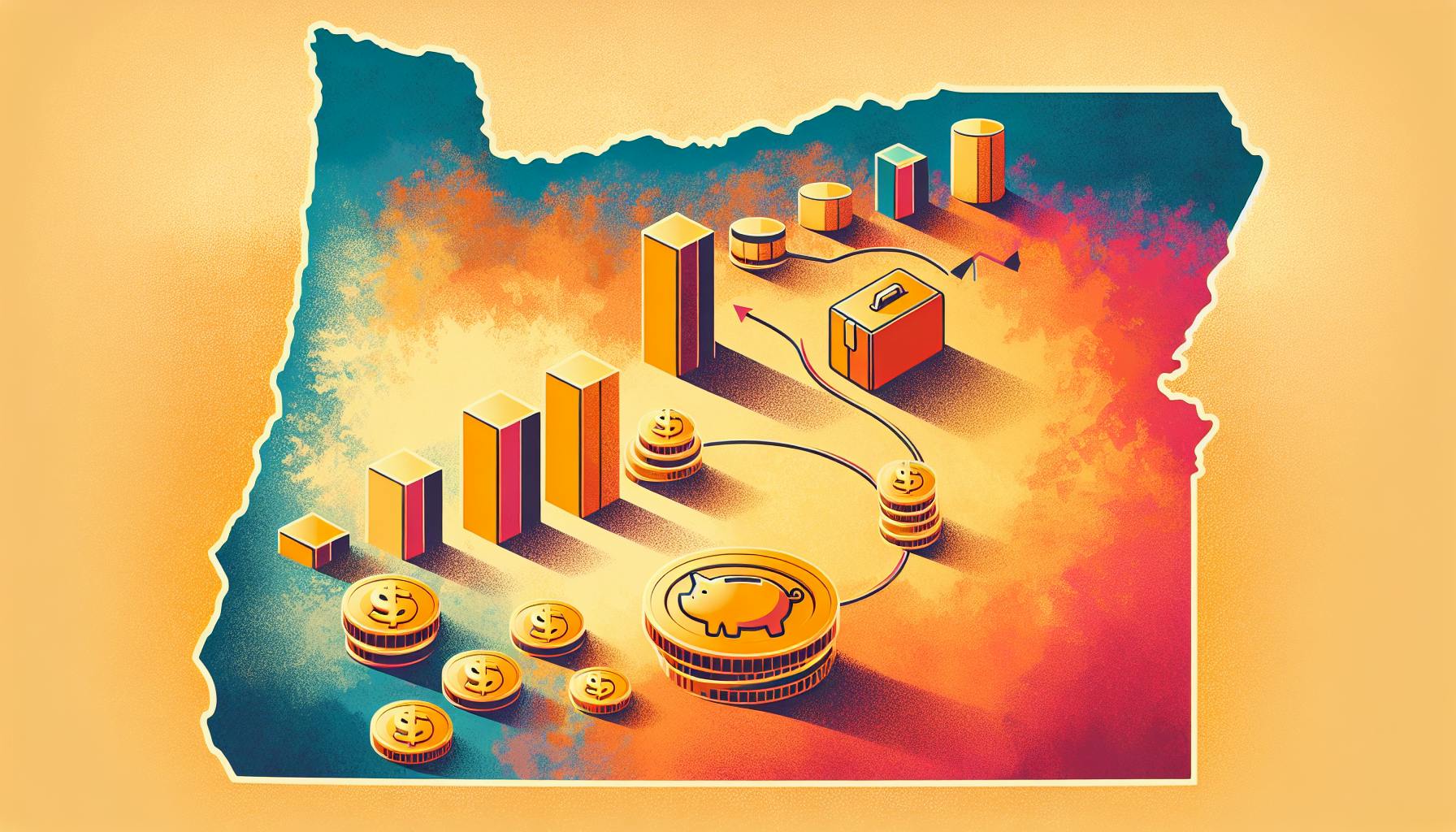Many business owners struggle with inefficient manual workflows and feel overwhelmed trying to keep up.
By setting up automated processes in Xero accounting software, you can save substantial time and increase business efficiency.
In this post, you'll learn how to leverage Xero's automation capabilities to streamline workflows like invoicing, accounts payable, payroll, and more. You'll also discover integrations that expand Xero's functionality so you can tailor automated workflows to your unique business needs.
Embracing Automation in Xero for Enhanced Productivity
Automating repetitive tasks in Xero can lead to significant time savings and efficiency gains for accounting teams. This introductory section will provide an overview of the benefits of embracing automation to boost productivity.
Understanding the Role of Automation in Accounting Software
Workflows in accounting refer to sequences of tasks or activities that need to be completed regularly, such as reconciling bank transactions, processing invoices, or running payroll. Manually performing these repetitive workflows can be time-consuming for accounting teams.
Automating these workflows in Xero allows the software to handle repetitive tasks automatically based on pre-defined rules and triggers. This enables accounting teams to focus their efforts on high-value tasks like financial analysis rather than routine data entry.
Key benefits of automating workflows in Xero include:
- Time savings - Automation reduces the amount of time spent on repetitive tasks so teams can focus on strategic initiatives.
- Increased efficiency - With automated processes, tasks are completed faster and more accurately. This boosts overall productivity.
- Reduced errors - Automating repetitive tasks leads to fewer manual errors caused by human data entry.
Exploring Xero's Automation Capabilities for Saving Time
Xero offers several features to help businesses automate workflows:
- Rules - Set up "if/then" rules to automatically categorize transactions, create follow-ups for outstanding invoices, allocate payments, and more.
- Batch payments - Schedule large volumes of supplier payments to be processed automatically on set dates, saving hours of manual work.
- Templates - Create templates for invoices, bills, and other transactions to quickly copy the format for future use.
Businesses can also automate a wide range of processes by connecting Xero to hundreds of add-on apps available in the Xero App Marketplace.
The Impact of Automating Workflows on Business Efficiency
Automating repetitive accounting tasks allows finance teams to focus on value-adding tasks that drive business performance rather than manual data entry.
With automated workflows in place, the accounting function becomes more efficient. Teams can provide insight through accurate financial reporting and support business growth with strategic input.
In summary, embracing automation capabilities in Xero can lead to:
- Streamlined accounting processes
- Increased productivity across the organization
- Better financial visibility to aid data-driven decision making
The result is enhanced business efficiency and performance over the long run.
Can you automate Xero?
Yes, Xero offers powerful automation capabilities through its integration with hundreds of third-party apps available on the Xero App Store. Here are some ways to leverage automations to save time and work more efficiently in Xero:
Streamline Repetitive Tasks
Many apps on the Xero App Store can automate repetitive, manual processes like reconciling bank transactions, sending invoices, collecting payments, etc. For example, apps like AutoEntry can automatically code bank transactions based on smart rules you set up. This saves the hassle of manually matching hundreds of transactions every month.
Similarly, you can use WorkflowMax to set up approval workflows and auto-send reminders for overdue invoices. PayPal and Stripe integrations can automatically reconcile payments and match them to open invoices.
Integrate Systems
Connect Xero to other business systems to seamlessly share data between them. For instance, pull in sales orders from an ecommerce platform like Shopify automatically into Xero as draft invoices ready to send. Or, sync inventory changes from a POS system directly into Xero with apps like Vend and Lightspeed.
Analyze Data
Reporting apps like Fathom and Pulse can connect to Xero to automatically analyze financial data and create insightful, shareable reports. You can even set up scheduled reports to be automatically emailed to stakeholders every month.
The right automations can save tons of time, eliminate duplicate work, and help spot issues before they escalate. I'd recommend browsing the Xero App Store to discover apps that can solve pain points unique to your business.
Does Xero automatically save?
When using Xero's accounting software, your work is automatically saved as you go, so you don't have to worry about losing any data if you need to step away or your computer crashes.
Specifically, when entering invoices in the new invoicing view, Xero will save each line item and entry as you fill them out. You can access this view by clicking "Switch to new invoicing" at the bottom of the invoice page.
This auto-save feature is incredibly helpful for avoiding lost work and improving efficiency. Some key benefits include:
- Peace of mind that your entries are securely saved automatically without having to manually save periodically
- Continuity if you need to close Xero or your browser and come back later to finish the invoice
- Streamlined workflow as you can move between invoices or other tasks without saving each time
The auto-save also applies across Xero, so things like customer records, reporting templates, payroll details etc. will all be saved automatically as well.
So in summary, Xero eliminates the need to manually save invoices, customer details or configurations as you work - it's all taken care of behind the scenes. This allows you to focus on the task at hand rather than worrying about saving.
sbb-itb-beb59a9
sbb-itb-beb59a9
sbb-itb-beb59a9
sbb-itb-beb59a9
Setting Up Automated Workflows in Xero
Automating repetitive tasks in Xero can save time and reduce errors by ensuring key processes like invoicing, expenses, bank reconciliations happen automatically based on triggers and rules you set up. This allows you to focus on higher-value strategic initiatives.
Here are some tips for setting up effective automated workflows in Xero:
Automating Invoicing Software Processes in Xero
-
Set up recurring invoices for fixed, repeatable services so invoices are generated automatically on a schedule you define. This saves the hassle of manually creating the same invoices every month.
-
Enable automated payment reminders to customers who have outstanding invoices. This prompts them to pay you faster.
-
Trigger automatic thank you emails when an invoice is paid. This builds goodwill with customers.
Efficiently Managing Accounts Payable with Automation
-
Use the Xero workflow max app to set up rules for automated coding and approvals of supplier bills. This speeds up the processing of bills so you pay suppliers faster.
-
Automate reconciliation of expenses and bank transactions to match expenses or deposits to the right accounts. This eliminates tedious manual work.
-
Schedule automatic payments to vendors on due dates after bills are approved to avoid late fees.
Streamlining Payroll Software Operations
-
Integrate Xero with payroll apps like Gusto to trigger automatic payroll runs based on a schedule. This ensures employees are paid accurately and on time.
-
Automate year-end tax form generation and filing after final payroll is processed. This saves administrative effort.
-
Set up rules to email pay stubs to employees when payroll is processed. This keeps employees informed.
Reconciling Bank Accounts Automatically
-
Use bank feed imports to automatically import new bank and credit card transactions into Xero daily. This saves from manually downloading and uploading statement transactions.
-
Configure bank rules to automatically code imported transactions to the appropriate accounts based on keywords or amounts. This speeds up reconciliation.
-
Enable auto-reconciliation to match imported bank transactions with related transactions in Xero. This identifies discrepancies for easier reconciliation.
By setting up these automated workflows in Xero, you can save hours of manual work each month and speed up key business processes. This lets you focus on high-level tasks that drive business growth.
Exploring the Xero App Store for Workflow Automation
The Power of Integrations: Expanding Xero's Capabilities
Xero offers an extensive app marketplace with over 1,000 integrations to help businesses maximize efficiency. By connecting Xero to other platforms like project management, inventory, POS, ecommerce, and more, companies can build automated workflows to save time and scale operations.
Popular Xero app integrations like WorkflowMax, ReceiptBank, and Hubdoc further optimize accounting tasks:
- WorkflowMax: Streamlines job costing by syncing project hours from WFM into Xero invoices. Reduces manual data entry.
- ReceiptBank: Automatically extracts key details from receipts and bills to populate Xero entries. Eliminates manual data input.
- Hubdoc: Automates the capture and coding of supplier invoices and bills in Xero for faster account reconciliation.
These are just a few of the many specialist apps available to tailor Xero and enhance workflow automation.
Tailoring Xero Integrations to Your Business Needs
With over 1,000 apps to choose from, businesses can pinpoint solutions for their unique needs:
- Ecommerce stores can integrate Xero with Shopify, WooCommerce, or Magento to automate order management and synchronize inventory, expenses, sales, and customer details.
- Field service businesses can leverage apps like ServiceM8 to automatically generate invoices in Xero from completed jobs.
- Marketing agencies can connect Xero to platforms like Mailchimp for streamlined client billing and financial reporting.
Take time to assess your workflows and identify where automation can drive the most impact. The Xero app ecosystem makes it possible to customize process automation across virtually any business function.
Leveraging Zapier for No-Code Automation with Xero
Zapier makes it easy to connect Xero to over 3,000 other business apps without coding. The intuitive drag-and-drop interface enables anyone to build multi-step automations between web apps.
Some examples of Xero workflows to automate with Zapier include:
- Syncing new Xero invoices to project management tools like Asana or Trello
- Pushing Xero accounting data to business intelligence dashboards like Klipfolio
- Automatically chasing late customer payments by triggering email reminders from Xero
With some creativity, Zapier can streamline complex, cross-platform workflows to save vast amounts of manual effort. It's a versatile option for automation using Xero.
Optimizing and Refining Xero's Automated Workflows
Tracking the Efficacy of Automation in Xero
Xero provides built-in analytics that can help track the impact of workflow automation over time. Here are some key metrics to monitor:
-
Time savings: Compare the time spent on key tasks before and after implementing automation. This could include time spent on data entry, reconciliations, reporting, etc. Aim for at least 25% time savings.
-
Accuracy: Automating repetitive tasks can greatly reduce human error. Track error rates in key processes and aim for near 100% accuracy.
-
Productivity: With efficient workflows, your team can get more done in less time. Measure output per employee before and after automation.
You can supplement Xero's analytics with data from connected apps like workflow automation tools. These may provide further insights into bottlenecks.
Best Practices for Continuous Improvement of Workflows
To optimize workflows over time:
-
Review analytics monthly to identify workflow pain points. Where are inefficiencies creeping back in?
-
Survey team members who use the workflows. What issues are they facing? What additional optimizations would help?
-
Incrementally improve processes. Small, regular changes are easier to implement than major overhauls.
-
Test changes extensively before full rollout to ensure no loss of accuracy or new issues introduced.
-
Adapt workflows to address changing business needs over time. Regularly review and realign.
Adapting Automation as Your Business Evolves
As your business grows and changes, reassess automated workflows to ensure alignment. Some key aspects to review:
-
Volume: Do the workflows still perform well with increased data volumes? Identify and address bottlenecks.
-
New product/service lines: Existing workflows may need adjustment to work for new business areas.
-
New apps/software: Adding new systems may require workflow redesign to integrate data flows.
-
Team growth: More employees may change workflow needs. Continually optimize for changing team dynamics.
With regular assessments as business needs shift, you can evolve workflows over time while maintaining peak accuracy and efficiency. The key is being proactive, not reactive.
Conclusion: Reaping the Benefits of Automated Workflows in Xero
Summarizing the Time-Saving Advantages of Xero Automation
Automating workflows in Xero can provide significant time-saving advantages for small businesses. Key benefits include:
- Reduced time spent on manual data entry and paperwork, freeing up staff to focus on more strategic tasks
- Faster processing and approvals for invoices, bills, expenses through automated routing and alerts
- Improved accuracy and consistency by minimizing manual errors
- Better financial oversight and reporting with real-time updates and dashboard visibility
By implementing automated workflows, small businesses can streamline their processes, boost productivity, and make better data-driven decisions.
Actionable Steps to Implement Xero Workflow Automation
For small businesses new to Xero automation, here are some practical first steps:
- Identify repetitive, high-volume workflows like accounts payable or payroll that can benefit from automation
- Research apps and integrations in the Xero App Store that can eliminate manual work
- Start small by automating just 1-2 key workflows, focusing on quick wins
- Set up rules and alerts for approvals to speed up routing
- Use bank feeds, OCR scanning, and other tools to automatically capture and code data
Taking a targeted, step-by-step approach makes Xero automation achievable without disrupting operations. Focus on the highest-impact areas first before expanding efforts.
Next Steps: How to Continue Advancing Your Xero Efficiency
To further optimize efficiency over time, businesses can:
- Expand automation to additional workflows one area at a time
- Customize more complex, multi-step automation using tools like WorkflowsMax
- Consult with accounting partners/advisors for industry-specific automation best practices
- Regularly review processes to identify new automation opportunities
- Set goals and benchmarks to quantify automation benefits over time
The key is approaching Xero automation as an ongoing initiative centered on continually elevating productivity and insight. With the right apps and integrations, the possibilities are extensive.




